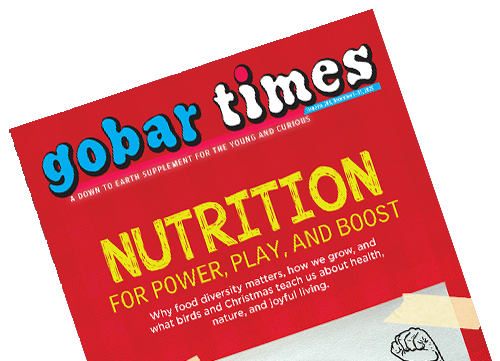
All about cracking the climate code with the Annual Climate Change Quiz in the Carnival’24. ******************* Young climate warriors from different parts of the country battled it out for the coveted title of the ultimate Climate Champions in The Bout — Green School’s Programme (GSP) annual climate quiz for schools. Organised as a signature event of the Green Schools Programme Carnival & Awards Ceremony at the India Habitat Centre on 30 January 2024, the second edition of The Bout was double the fun and double the adrenaline! Over 35 school teams, consisting students from Grades 6 to 10, participated …

Waste segregation is mandated in several states in India. But most of the plastic waste ends up in landfills instead of being recycled as barely 30 per cent of it is sorted correctly. Hence, the need of the hour is to educate people about segregating, composting, and recycling waste through aggressive awareness programs by community and self-help groups. So, don’t be a foolish donkey and dispose of your waste properly.

From trash mountains to waste segregation, a high-schoolers research and observation through the dump yards. The garbage mountains along the Yamuna, reminded me of the dystopian scenes from the movie Idiocracy (2006), in which people living in the shadows of such mountains get buried under an avalanche of trash. Hence, I embarked upon a quest to explore solutions to such colossal challenges and this journey took me the sites in and around my city, Chandigarh.Since 2019, I was associated with door-to-door campaigns for waste segregation in Mohali. Awarded as the Cleanest City in Punjab in 2023, I delved into this strategy of …

Child waste pickers in India need our help and compassion. Imagine waking up really early, when the sun is just starting to peek through. Imagine putting on a pair of your most ragged, worn-out clothes, picking up your work-gear – a large, equally tattered bag, maybe. And then, trudging out to begin another day, not for school, but for doing what you do every day of the week: pick up waste. Thousands of children in our country do this every day. You can see them scurrying along streets and footpaths with their oversized bags slung on their thin shoulders, rummaging through garbage dumps. They are the unsung ‘green …

Showcasing how visionary projects can nurture future leaders who are not only academically adept but also environmentally conscious and aware. ***************************** In an era of urbanization and technological advancements, the importance of connecting the youngsters with nature cannot be overstated. My school, the Sacred Heart in Kalyan, Maharashtra, stands as a beacon of inspiration in this regard. Their authorities had given me the mandate to set up a butterfly garden and provided all the required finance and manpower. And as our pioneering effort flourished with time, I was duly absorbed as a Nature educator...

The triple planetary crisis refers to three interconnected environmental crises that pose a threat to humanity—climate change, pollution, and biodiversity loss. We need to address this crisis by adapting to nature-based solutions that can leverage the inherent resilience of our ecosystem. One such solution is the conservation of mangroves. Mangroves are the kind of trees that are found in intertidal zones, between high tide and low tide, in tropical and subtropical regions...

World Menstrual Hygiene Day 2023: Small-scale incinerators for sanitary pad disposal in schools is not a good idea. Lack of monitoring and emission of harmful gases like dioxins and furans within poorly designed, substandard toilets are major risks posed by small-scale incinerators. ****************************** The theme of Menstrual Hygiene Day 2023 is to make menstruation a normal fact of life by 2030. The predominant objective is to create a world where no one is held back because they menstruate…

Recapitulating the prestigious Green Schools Awards and felicitating the commendable and inspiring work of all the awardees in different categories. ********************************* Ater a three-year hiatus, the Green Schools Programme (GSP) of the Centre for Science and Environment (CSE) was back with a bang in February this year – as its annual audit drew to a close, a one-and-a-half day national Green Schools Carnival was announced. The cornerstone of the event was – of course – the GSP Green Schools Awards, but...

A glimpse from the Gobar Times Design Studio, a designing contest organized as part of the Green Schools Carnival 2023, to allow our talented readers to express their vision and version of the Gobar Times by curating two-pages of the magazine—showing what they would like to read and how.

Performing tangible actions to achieve credible solutions—making eco-friendly cleaning agents and raising awareness on chemically-intense products to control pollution. ******************************************************************************** The unsettling sight of the Bellandur Lake—a foamy, cloudy demon gargling bubbles—and plastic litter—baffling mounds disposed irresponsibly—motivated me to act and revive our wonderful world. We all know that the climate crisis is going off the charts and the practise of ‘Reduce, Reuse, and Recycle’ is gaining alarming urgency. Thus, it&…

